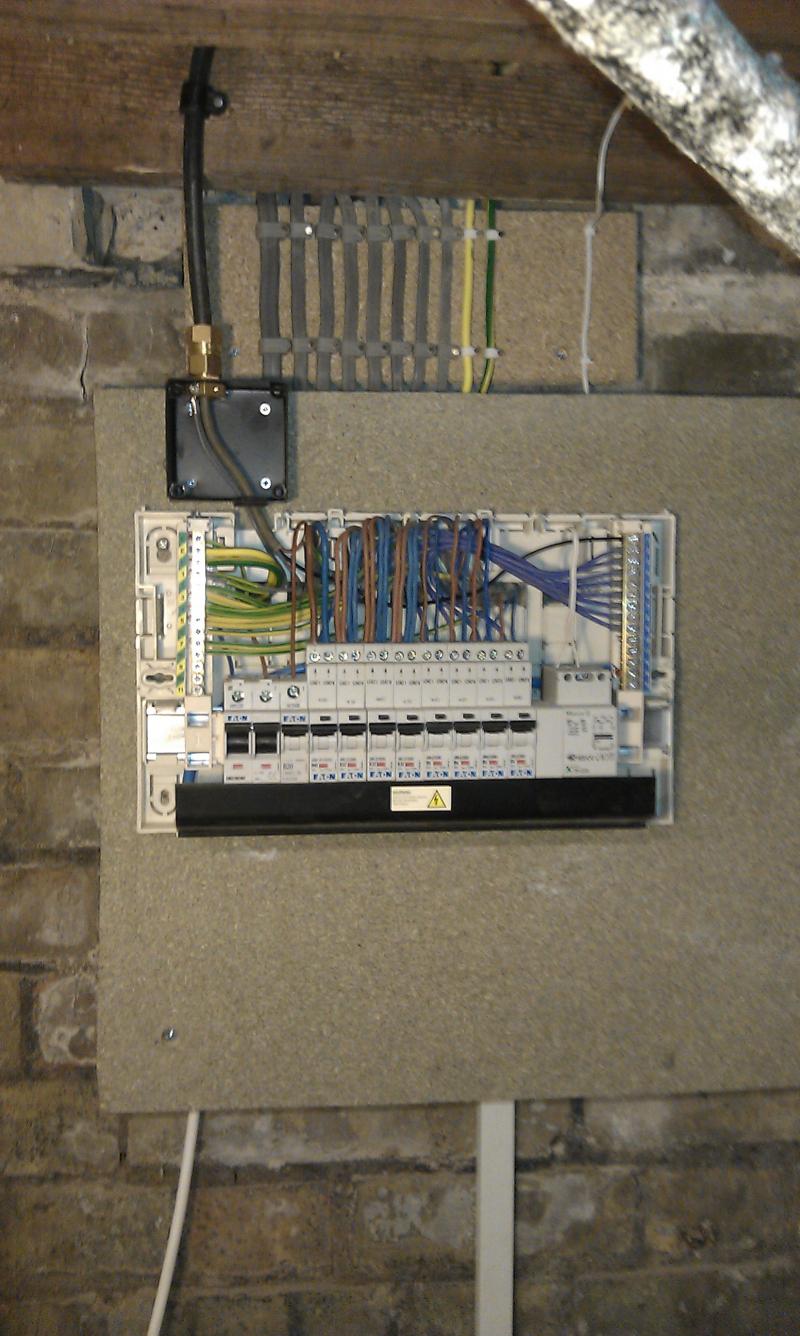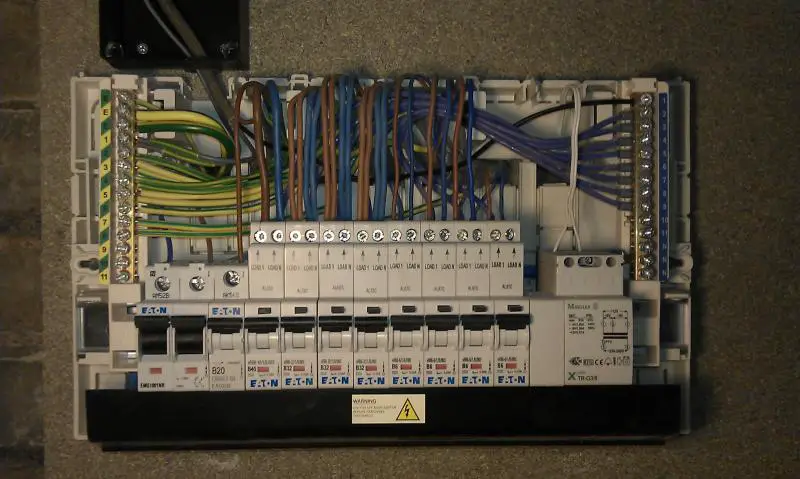I’ve completed my new consumer unit, which is about 4m from the old CU and meter. I’ll get the meter moved to the new CU location, as soon as building control are able to test and certify the new CU and installation. 4m is longer than you’re allowed meter tails, so I need to put an isolator on the wall near the old meter. I called the BCO electrical inspector to ask what he’d want to see and he said “100A isolator on the wall near the old meter and run 25mm^2 SWA (3core) over to the new CU”.
I bought a few bits, listed below. First thought: Wow. 25mm^2 SWA is massive.
100A isolator (fused):
http://www.tlc-direct.co.uk/Products/CGFS100.html
Box to abut the CU and terminate the SWA into, as there’s nowhere to put the glad on the CU chassis (TLC didn’t have any metal boxes with a 25mm knockout):
http://www.tlc-direct.co.uk/Products/WK607B.html
25mm piranha nuts and glands, etc.
So, onto the questions: The earth terminal on the consumer unit won’t take the 25mm^2 earth core. There’s only one terminal left, and it’s 16mm^2. Should I:
1) Terminate the 25mm^2 earth core with a lug and attach it to the piranha nut earth terminal:
http://www.tlc-direct.co.uk/Products/BHLUG25.html
Then run a 16mm single with a similar lug from the piranha nut to the earth terminal in the CU. This is the cheapest, easiest, and most simple option, I suspect, but requires me to crimp onto a 25mm^2 core. I’m not sure how well my crimps will do that.
2) Terminate the earth core into an earth block.
http://www.screwfix.com/p/4-way-earth-block/12386
Similar to above, but terminate the earth core an earth block inside the box I’m terminating the SWA into, then run one 16mm^2 up to the CU earth terminal, and one 16mm^2 (or 25mm^2?) to the piranha nut terminal. No crimping of 25mm^2 required, but certainly more faff.
3) Something else entirely.
As an aside, I wonder if I could have used a 63A fuse at the isolator, and used 16mm^2 SWA (or even 10mm^2 which is rated 73 Amps). It would have cost a shedload less, been easier to work with, and 63A is totally sufficient for our usage. At least until we get the meter moved. (In fact, we’ve made do with 26A from two RCD’d sockets for ages while I’ve been re-wiring )
)
Anyhow, here are some nearly finished CU pics, for anyone who's interested. The SWA at the top supplies outside sockets, and the 25mm SWA will enter from a box mounted below the CU:
Thanks for any advice.
I bought a few bits, listed below. First thought: Wow. 25mm^2 SWA is massive.
100A isolator (fused):
http://www.tlc-direct.co.uk/Products/CGFS100.html
Box to abut the CU and terminate the SWA into, as there’s nowhere to put the glad on the CU chassis (TLC didn’t have any metal boxes with a 25mm knockout):
http://www.tlc-direct.co.uk/Products/WK607B.html
25mm piranha nuts and glands, etc.
So, onto the questions: The earth terminal on the consumer unit won’t take the 25mm^2 earth core. There’s only one terminal left, and it’s 16mm^2. Should I:
1) Terminate the 25mm^2 earth core with a lug and attach it to the piranha nut earth terminal:
http://www.tlc-direct.co.uk/Products/BHLUG25.html
Then run a 16mm single with a similar lug from the piranha nut to the earth terminal in the CU. This is the cheapest, easiest, and most simple option, I suspect, but requires me to crimp onto a 25mm^2 core. I’m not sure how well my crimps will do that.
2) Terminate the earth core into an earth block.
http://www.screwfix.com/p/4-way-earth-block/12386
Similar to above, but terminate the earth core an earth block inside the box I’m terminating the SWA into, then run one 16mm^2 up to the CU earth terminal, and one 16mm^2 (or 25mm^2?) to the piranha nut terminal. No crimping of 25mm^2 required, but certainly more faff.
3) Something else entirely.
As an aside, I wonder if I could have used a 63A fuse at the isolator, and used 16mm^2 SWA (or even 10mm^2 which is rated 73 Amps). It would have cost a shedload less, been easier to work with, and 63A is totally sufficient for our usage. At least until we get the meter moved. (In fact, we’ve made do with 26A from two RCD’d sockets for ages while I’ve been re-wiring
Anyhow, here are some nearly finished CU pics, for anyone who's interested. The SWA at the top supplies outside sockets, and the 25mm SWA will enter from a box mounted below the CU:
Thanks for any advice.



